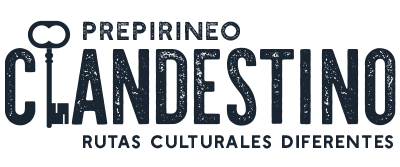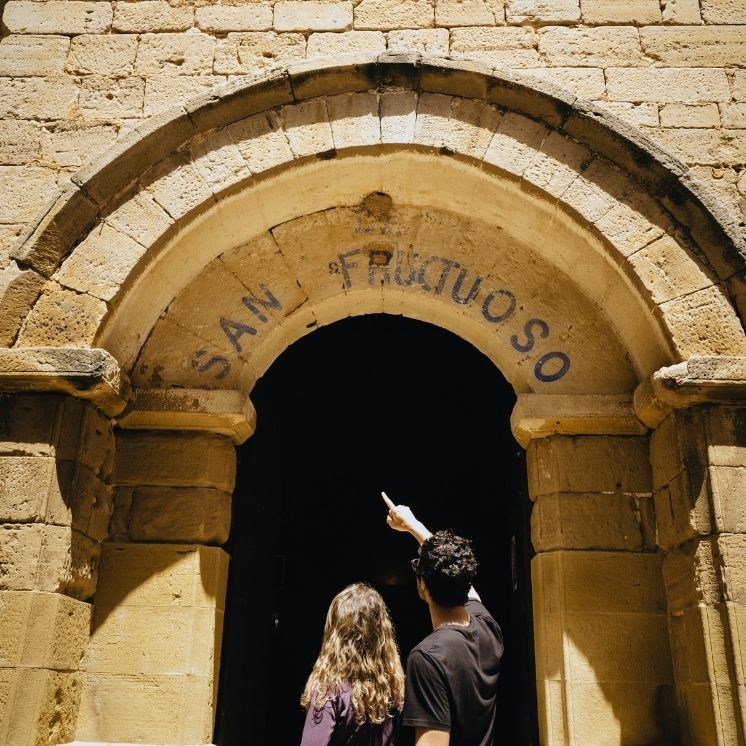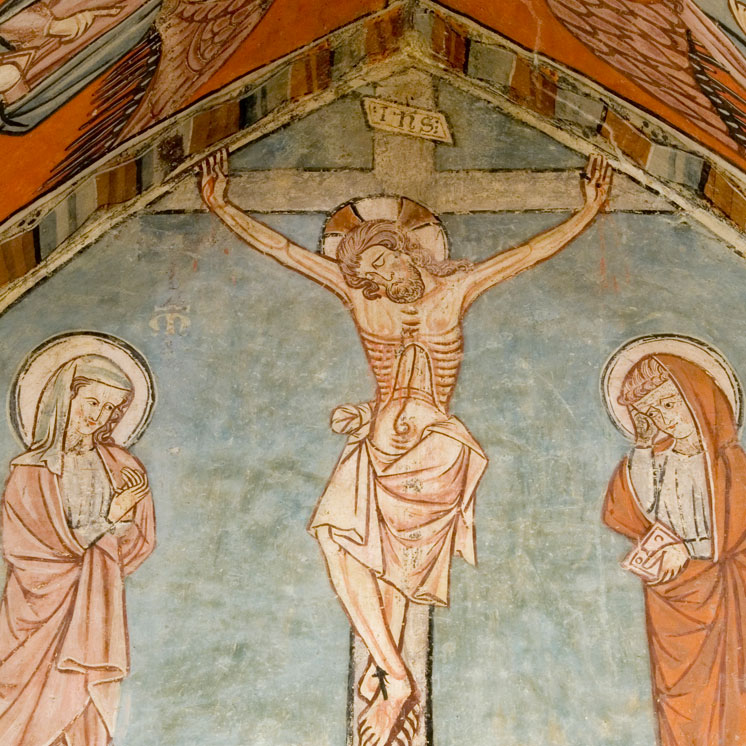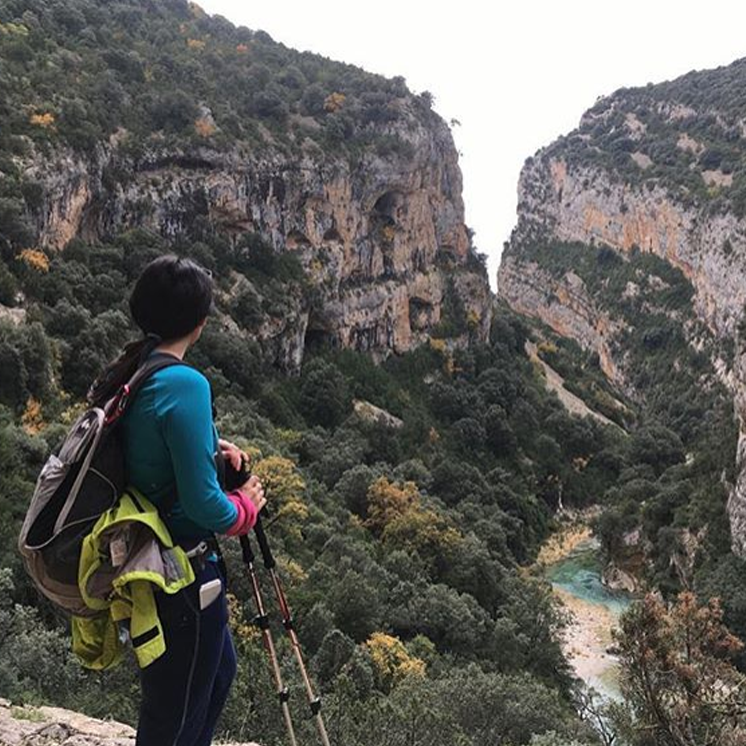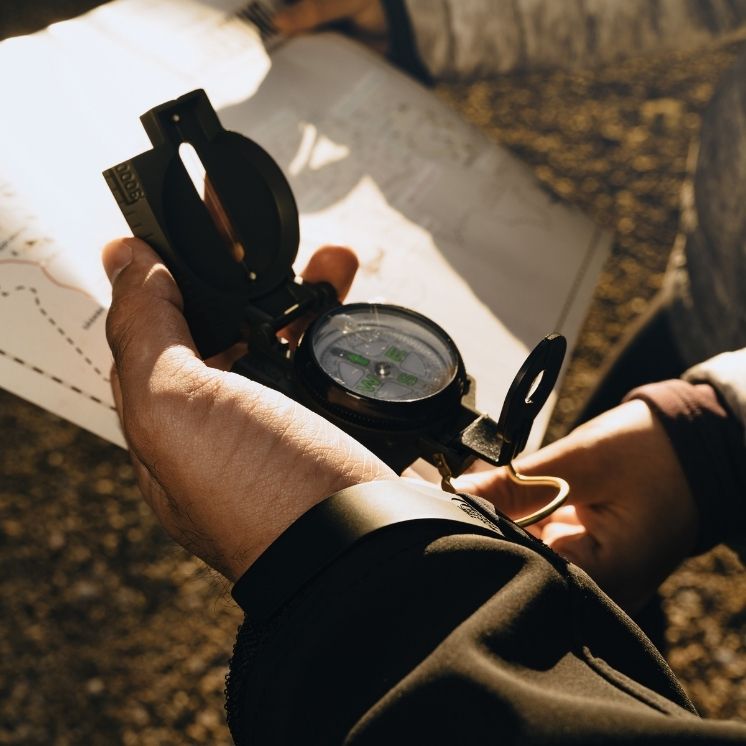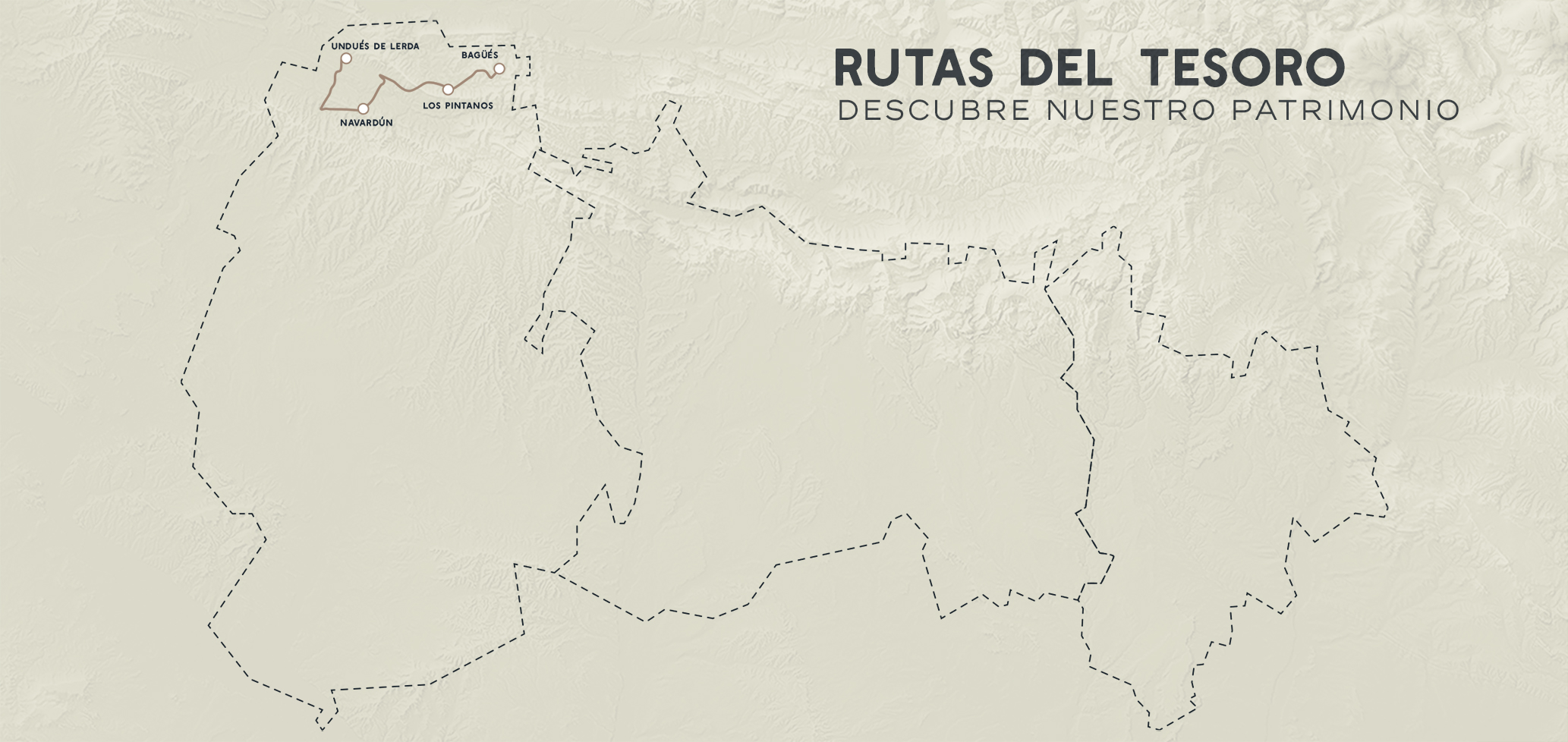LAND OF THE RECONQUISTA (RECONQUEST)
This area is famous for the whimsical shapes created by its rivers in the limestone rocks, and it is well-known by adventurers and athletes. But it also houses excellent cultural and artistic treasures. Welcome to the best area of Aragón to see Gothic paintings.
At each of the stops on this page, there is a hidden treasure. Finding the treasure has varying levels of difficulty. We recommend that to hunt for the treasure, you download the free Geocaching app from https://www.geocaching.com/play, where you will find more information and some useful hints to help find the treasures. You can also see the level of difficulty of each location.
Good luck to everyone!
COMICS OF THE XIII CENTURY
The paintings that you will see on this route tell a story of the past. They are like cartoons from comic books but drawn in the Gothic style. In them, you can follow a story.
Keep in mind that in the thirteenth and fourteenth centuries, which is when they were drawn, most people did not know how to read. So the paintings had to be very didactic, so that whoever saw them understood the narrative.
As you follow the illustrated journey, you will see crucifixions, martyrdoms, hell, funeral rites, and exorcisms. The painters wanted to steer the parishioners away from evil, and let them know what would happen to them if they left the righteous path.
The style is Romanesque, and the drawn figures are very expressive. But it is easy to see the narrative objectives of the artists. The important thing is not the figures, but the scene itself.
This route is fascinating, even if you are not an art enthusiast. Keep in mind that the paintings were created so that people quickly understood what was happening.MAP OF THE ROUTE
DOWNLOADABLE MAP AND ROUTE
BIERGE: CHURCH OF SAN FRUCTUOSO
This is our first stop – the Church of San Fructuoso de Bierge. Although on the outside it is not the most beautiful building, the mural paintings inside are wonderful. In fact, some of them have been exhibited in the National Museum of Art of Catalonia, in New York and Canada. If you look at the crucifixion painting, you may notice something strange. Take your time to observe carefully. The Church of San Fructuoso de Bierge was built in the 13th century, and it was around the middle of that century that mural paintings began to be made. These paintings represent fragments of the lives of San Nicolás de Bari, San Juan Evangelista and San Fructuoso.
Do you notice something unusual about the artworks? Let us help you a little: If you look closely, the highest paintings in the Sanctuary are somewhat different from the ones below them. This is because two different painters, known as the first and second Masters of Bierge, created the paintings in this church. The first painted in a more archaic way, while the second painted with a Gothic-linear style and is more natural, with more movement. The painted elements are accompanied by inscriptions that identify what was painted, for example, the names of the Saints. The lineal style is remarkable for its subtlety. It is characterised, particularly in northern Spain, by undulating rhythms and a refined colour scale.
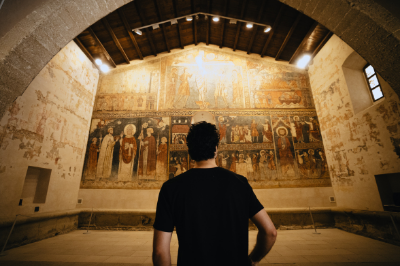
LOCATION
HOURS
THE BIERGE TREASURE
LOCATION
HOURS
THE BIERGE TREASURE
COORDINATES
You will find the treasure at the following coordinates:
42.162891, -0.084977
Hint: At ground level, twice.
Placed by: Equip Zulu Bcn
CASBAS DE HUESCA: MONASTERY OF OUR LADY OF GLORY
This is a Cistercian female monastery founded in 1173 by Oria de Pallars, daughter of the Count of Urgell who was in charge of reconquering the town of Casbas a few years earlier. The last construction work on the church took place in the year 1208.
In the present day, part of the original structure of the walls is conserved, together with the abbey house, the tower of homage, the cloister and the chapter house. The temple also retains some of its original elements, despite the structural reforms it has undergone. It was an active convent until 2004.
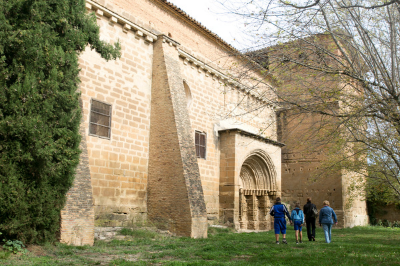
LOCATION
HOURS
THE TREASURE OF CASBAS DE HUESCA
LOCATION
HOURS
You can visit the monastery on Saturday mornings at 11 am. From June to October, visits are extended to several days a week, with the “Open Doors” program (check schedules here.) The rest of the year, special visits may be arranged by phoning +34 636-913503.
THE TREASURE OF CASBAS DE HUESCA
COORDINATES
You will find the treasure at the following coordinates: N 42 ° 09.373 W 000° 08.405
Hint: Under the arch.
Placed by: Clandestine Pre-Pyrenees
IBIECA: CHURCH OF SAN MIGUEL DE FOCES
The church of San Miguel de Foces was built by Ximeno de Foces in 1249, to serve as a pantheon for his family. Later he donated it to the order of St. John of Jerusalem Hospital, whose soldier-monks were in charge of managing the entire monastic complex, and were committing to offering care and shelter to those who passed by.
From the outside, we can see how this church also falls between late Romanesque and Gothic eras, like the paintings at San Fructuoso. It is a shame that of all the buildings that formed this group, only the church has remained. However, we are lucky that it is the best preserved Gothic-linear church in Aragon.
Additionally, this church is similar to the cathedral of Valencia, believe it or not! Do you know why? Because Valencia’s cathedral was also financed by the Foces family and was built by the same builders.
And speaking of builders, it’s worth stopping to look at the stonemasons’ personal marks on the ashlars – it’s amazing how many different marks there are!
The gothic-linear murals around the tombs of Don Ximeno and Don Atho de Foces are a perfect example of this Gothic style with its French influence.
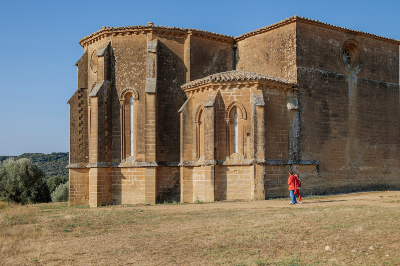
LOCATION
HOURS
THE IBIESCA TREASURE
LOCATION
HOURS
WEEKENDS from 11:00 to 13:00 PREVIOUS VISIT REQUEST, by phoning the following numbers:
ANA: +34 628-540341
MONICA: +34 659-571702
TOÑA: +34 636-116019
From June to October, visits are extended to several days a week, with the “Open Doors” program. Consult schedules on the above telephone numbers.
THE IBIESCA TREASURE
COORDINATES
You will find the treasure at this location:
42.148000, -0.195333
Hint: Tri-Arrows.
Placed by: Tri- Arrows: To solve the riddle, you will have to look for coordinates. We recommend that you access Geocaching and prepare yourself before going for the treasure.
BARLUENGA: HERMITAGE OF SAN MIGUEL
The chapel was built next to the town cemetery in the second half of the thirteenth century, following a simple late-Romanesque style. The very well-conserved paintings inside date back to the XIV century. The wooden ceiling is also interesting, because it retains part of the polychrome decoration on the architectural elements.
The hermitage of San Miguel does not attract attention from the outside, but in its interior, we find the reason why it was declared a National Monument – its beautiful mural paintings. At this stage of the route, you are already a Gothic-linear expert, right? Observe these paintings depicting Saint Michael, the Last Judgment and the resurrection of the dead. What characteristics do you find that are similar to the rest of the paintings we have seen?
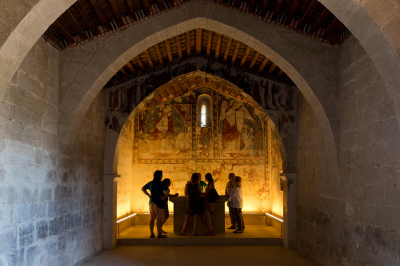
LOCATION
HOURS
THE BARLUENGA TREASURE
LOCATION
HOURS
Request the keys at the first house as you enter the town, on the right. Open from June to October, with guided visits several days a week with the “Open Doors” program.
Check schedules.
THE BARLUENGA TREASURE
COORDINATES
You will find the treasure in the coordinates: 42 ° 12’01.6 “N 0 ° 20’24.8” W
Hint: Look for the stone euro symbol.
Placed by: Clandestine Pre-Pyrenees
